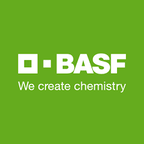Modified Chemical Electrodes for Solar Fuel and Catalysis Applications
New surface chemistries for the generation of solar fuels!
|
We are part of the Center for Hybrid Approaches in Solar Energy to Liquid Fuels (CHASE), a Department of Energy Fuels from Sunlight Hub. CHASE’s mission is to develop molecule/material (hybrid) photoelectrodes for cooperative sunlight-driven generation of liquid fuels from feedstocks found in air: CO2 and H2O. The Center is pursuing these goals through three interconnected Thrust areas: Thrust I: Catalyst-Semiconductor Interfaces; Thrust C: Cascades Catalysis, and Thrust H: Catalytic Hybrid Photoelectrodes. Our research lab’s involvement in CHASE includes the integration, evaluation, and robustness of molecular layers on silicon substrates.
|
|
New Chemistries to Modify Carbon-based Materials
Carbon materials have unprecedented chemical stability, but often require harsh chemistries to modify the surface chemically. We are developing a new synthetic approach--based on the nucleophilic replacement of surface-bound chlorine atoms--to modify carbon-based materials with functional groups that are compatible with click chemistries. To date, we have developed three such modifications for amorphous carbon thin films, with terminal azide, thiol, or vinyl groups. We are particularly interested in: 1) Experimentally probing the reaction mechanisms, to best tune surface reactivity and selectivity. 2) Determining new patterning methods. 3) Applying our reaction strategies to new materials. |
Chemically Modified Electrodes and Catalyst Supports
Amorphous carbon films are ideal materials for generating functional materials, as their electronic and optical properties are readily tailored with both alterations in deposition parameters and through the introduction of new functional groups on the surface. We are using the new surface modification chemistries to develop electrode materials, with the specific questions of: 1) How stable are these chemistries when exposed to continued electrochemical cycling in both aqueous and organic environments? 2) What is the optimal surface chemistry for direct electronic communication between aC film and electroactive molecules attached to the surface? 3) How can the optical properties of the aC films be used to drive electrochemical reactions? |











